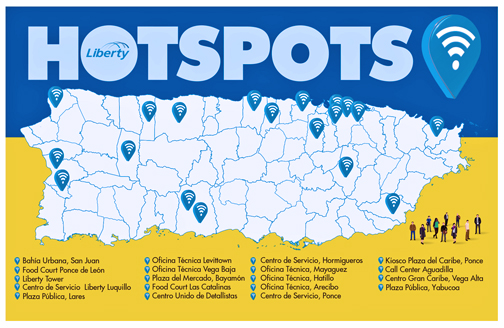‘Practical Techie:’ To give or not to give?


Author Rafael Matos is professor of multimedia at a private university and director of the Caribbean Multimedia Center, a nonprofit media lab focusing on closing the digital divide. Questions should be sent to [email protected].
A merchant must decide nowadays whether providing customers free access to the Web is good for business. Very much so, since connectivity is the backbone of the Internet. Let’s look at it this way, our lives revolve around three digital windows: cellphone, computer and TV screens.
Everyone is literally tuned in to smartphones, tablets, laptops and cable TV connections as they walk their daily paces. And most people today are tirelessly into social networking.
Thus, it’s a no-brainer. Customers expect wireless Internet access wherever they go. Mobile phones and tablets are no longer instruments to stay in touch with love ones. People actually use them constantly as tools to conduct business.
Hoteliers know this best and statistics prove it. Potential guests prefer lodging spots that provide Wi-Fi access. Travelers not only look for, but expect a Wi-Fi hotspot.
Big hotels are another story. They hardly ever offer free connections and some even charge as much as ten bucks an hour for access.
But restaurants, fast food places, bookstores and coffee houses are almost natural locations for free hotspots because customers use them as virtual offices. Or, if you own a mechanics shop, a full-fledged Wi-Fi hotspot is prudent if customers tend to wait for service. Pubs and clubs are also mandatory. Many customers appreciate that they can save on their mobile data allowance while connected to your service.
Retail hotspots
What about small retail stores? Should a high speed Internet connection be part of the hooks in the constant push for new customers?
Indeed, free Wi-Fi fosters a good relationship with existing customers. It should also work for new ones. Studies suggest that old or new customers stay committed to stores that set up a stable Wi-Fi hot spot connection. I won’t burden you with the statistics but you can verify some of them here.
Not willing to invest? One way to get free Wi-Fi installation for your business is to connect to a renting provider. It gives the customer free access for the first 10 minutes, then will pay mostly via premium SMS, and there is also an option to pay by credit card. Tread carefully with this option, since it might vex your customers if not advised properly of costs.
Costs of Wi-Fi service
Very minimal compared to benefits. Equipment needed is a fast router with a Wi-Fi is a range of 50 to 150 feet, probably running between $30 to $200, depending on transfer speeds and capacity for number of concurrent Wi-Fi users. Then comes a broadband connection with an efficient Internet Service Provider. This runs another $50 to a $100 a month. The average bandwidth used in retail hotspots is 20Gb a month which is not an expensive proposition.
“Free Wi-Fi works best for any business that wants to encourage customers to spend time in their establishment,” says the National Federation of Independent Business (NFIB).
You can kick the service up a notch by also providing credit card processing with broadband connection for virtual customers, but this requires special security measures or it’s best to go through bona fide pay processing providers. Also you can send promotions and event notices to your customers while they are at the store or nearby.
Security is an issue
Hackers and viruses might present a security problem for public hotspot users. When contracting broadband services, make sure there is a both hardware and software firewalls.
“Most hardware firewalls are located in your broadband router and effectively stop incoming threats, such as infected files downloaded from the Internet. However, they are less effective at stopping outgoing threats. For example, if one of your employees downloads an infected file onto a USB drive at home, then brings the file to work and emails it around the office, a software firewall will be better at stopping this threat.” the NFIB advises.
It might be wise to set up passwords out on a need to know basis. First, monitor if customers don’t mind having to ask for the pass code. Passwords should be changed every six months or so to ensure that they aren’t finding their way into the wrong hands or neighboring business. Ask your provider about WPA2, a very reliable encryption system to protect your network.
Wi-Fi searchers
In summary, in the age of smartphones and tablets, free Wi-Fi offers businesses an opportunity to attract and retain new customers. It provides the possibility of creating a registry of new clients. And the system only requires a small investment. So go with a hotspot to differentiate your business from others in the block or mall.
Last, if your are a heavy business traveler in need of constant knowledge of where hotspots are located wherever you are, use JiWire.com, a registry of 826,480 free and pay Wi-Fi locations in 144 countries. It’s a very practical travel tool, basically a search engine for free and paid hotspots. You can search by street address, airport code, postal code or name of the access point.
Alternatively, browse by business type, such as airport, hotel and cafe. Others are wififreespot.com. boingo.com and hotspothaven.com.
Happy digital trails to you!








